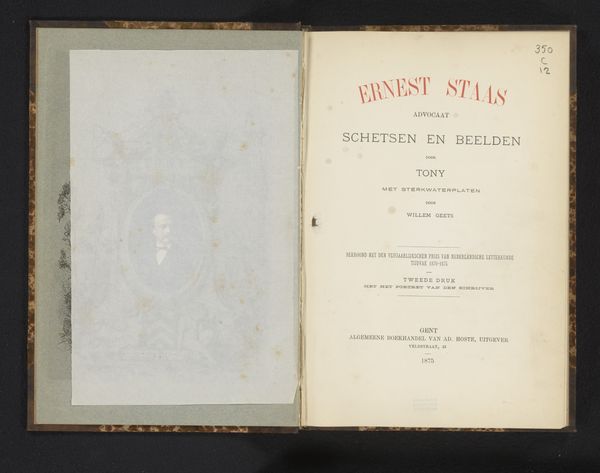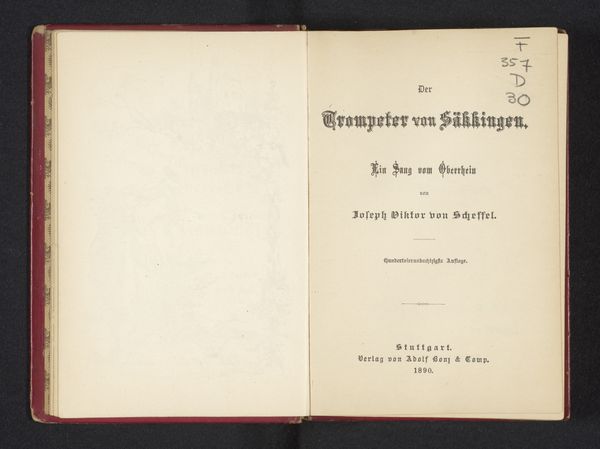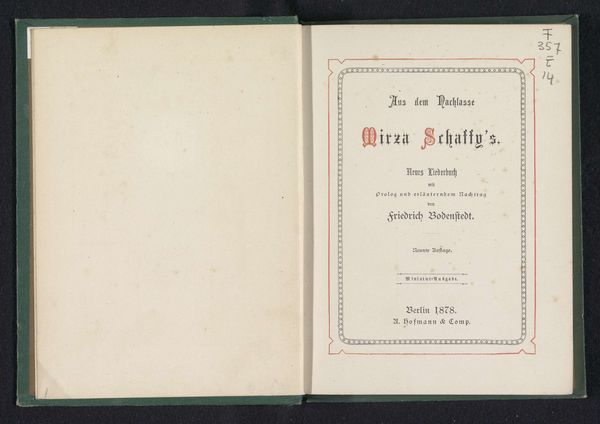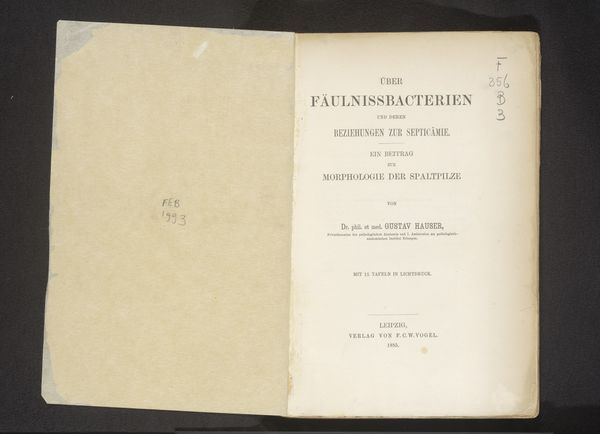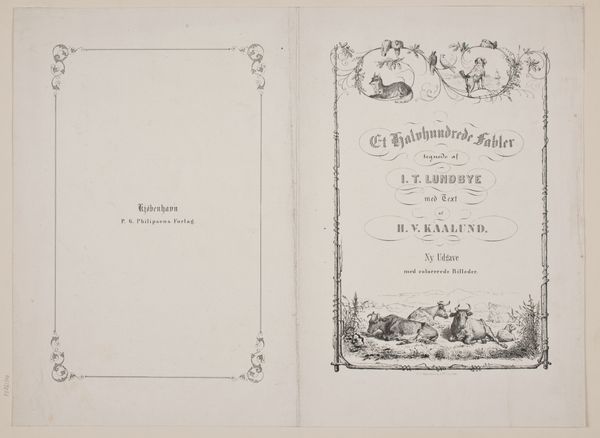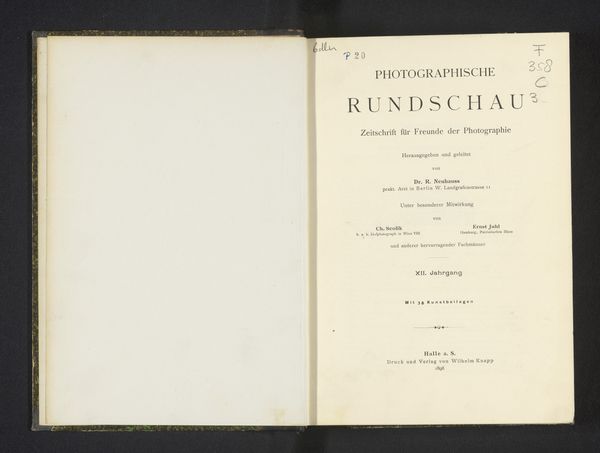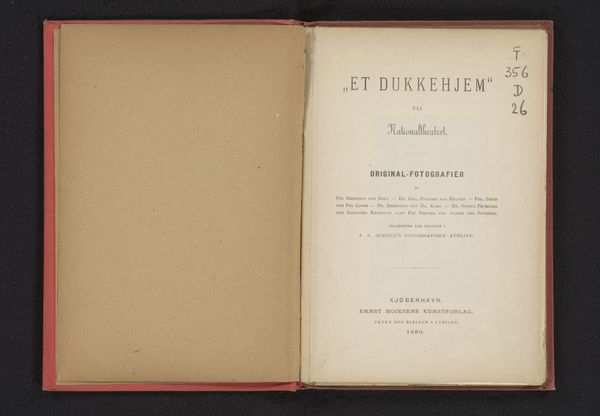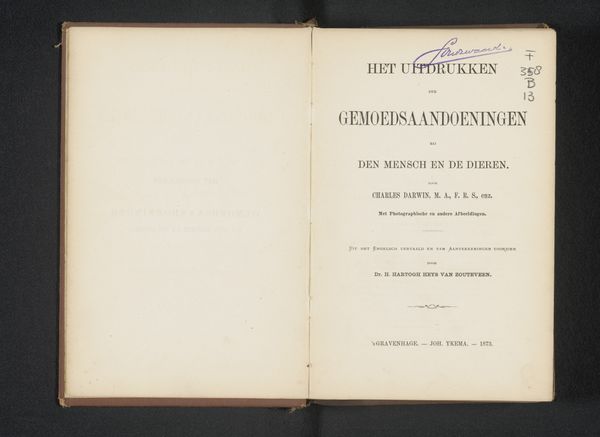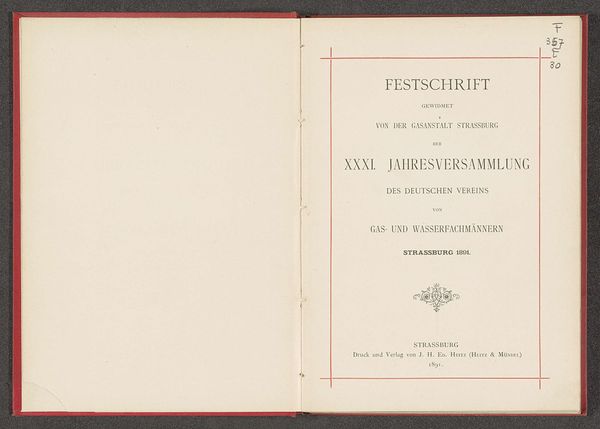
Ernest Staas, advocaat : schetsen en beelden / door Tony (Anton Bermann); met sterkwaterplaten door Willem Geets 1874
0:00
0:00
print, etching
#
portrait
# print
#
etching
#
genre-painting
Dimensions: height 280 mm, width 193 mm, thickness 20 mm
Copyright: Rijks Museum: Open Domain
Curator: Here we have an etching dating to 1874, "Ernest Staas, advocaat : schetsen en beelden", which translates to "Ernest Staas, lawyer: sketches and images," a collaborative effort by Tony Bermann and Willem Geets. It presents as the opening of an illustrated book. Editor: My immediate sense is of delicacy. The print is light, almost ghostly, giving the impression of something quite refined, though formal. The portrait in that decorative surround, it all points to status, doesn't it? Curator: It does. Let’s think about etching as a medium in this social context. This was an age where printmaking allowed for the democratization of portraiture. A book such as this signals Staas's standing. And these illustrations made in "sterkwaterplaten," with strong water plates, as it's described, suggests careful, controlled craftsmanship. It wasn’t simply churning out images; it’s a more considered process. Editor: Indeed. Etching traditionally possesses an intellectual appeal; it is the art of incisive lines biting into metal, demanding skill. Looking at the ornate frame surrounding the portrait, one can trace the classical influences but observe its integration into something distinctly bourgeois, a subtle claim to elevated culture. It's laden with symbolic weight. What stories does this layering tell about Staas, the man? Curator: The details in that frame, particularly the cherubs and what appear to be allegorical figures at the base, definitely enhance that sense of gravitas and allude to qualities associated with justice and civic virtue. But notice how the ink seems uneven in places. That element of the unpredictable – a quirk of the etching process itself – offers an interesting counterpoint to all the deliberate social signaling. The act of production is quite visible. Editor: Absolutely, it invites questions regarding value. Is it primarily a book for legal colleagues or potential clients, a sophisticated calling card of sorts? The aesthetic speaks volumes, linking law, art, and bourgeois respectability. The title itself suggests he is viewed in a similar manner: part lawyer, part muse. Curator: A blend of the practical and the ideal… fascinating. Ultimately, it shows how art objects embody and participate in the social and economic life of their time. Editor: Precisely. The layers of symbolic meaning, from classical imagery to etching process, creates an object rich with historical context and aspiration.
Comments
No comments
Be the first to comment and join the conversation on the ultimate creative platform.
